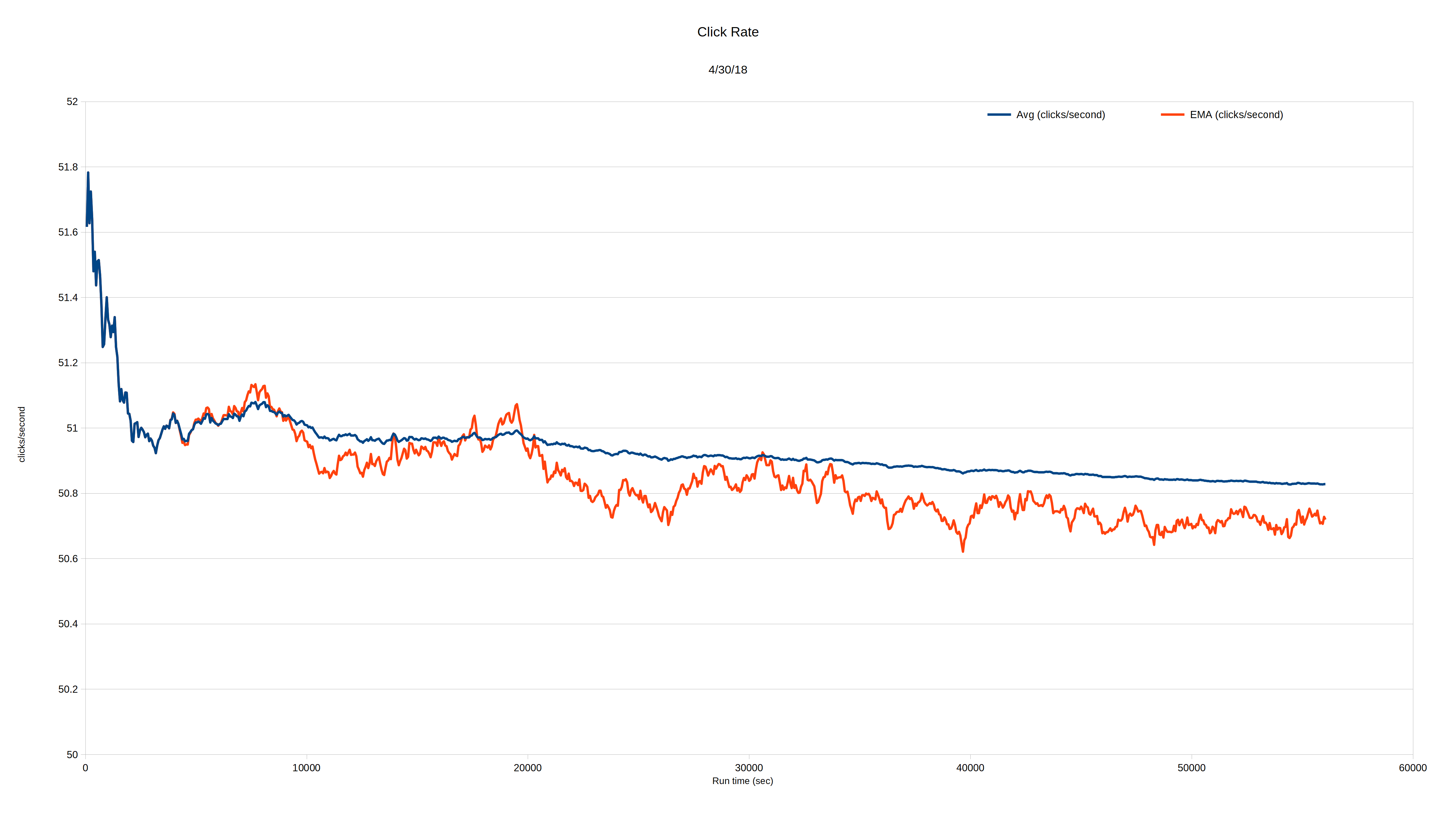After an extremely productive discussion here on hackaday.io, I decided to change the source of decay events I'm using. I swapped out the 241Am source for a 226Ra source I had obtained a while back on fleaBay. It claims to be a 6k CPM source intended for calibrating old Civil Defense Geiger counters from the cold war days. 226Ra breaks down to 222Rn by emitting an alpha particle and a gamma photon. (See the radium decay series chart here.) My Geiger counter doesn't detect alpha particles, but it does detect gamma photons.
The idea here is to raise the rate at which decays are detected to the point where I get enough of them that the statistics will produce an acceptably accurate clock. The mathematics are covered on a very useful page (here) that [Ted Yapo] brought to my attention. What it nets out to is the higher the rate of detected decay events ("clicks"), the more accurate the clock. For example, I need at 168 clicks per second for the clock to achieve (within 1 standard deviation) a 1-minute-a-week accuracy. To achieve a 1-minute-year accuracy, I'd need to detect 8760 clicks per second.
So, I swapped in my 226Ra source and measured the click rate against a realtime clock with an accuracy of 2 sec/year. So far, the result is a little disturbing.
The good news is that the rate is up quite a bit. The average over the 15.5-hour run is a little over 50 clicks per second. That's not enough. I need more than three times that many even to get to an accuracy of a minute a week. It looks like I'll need a much "hotter" source. More disturbing is that, so far, the average shows a trend:

During the run, the number of clicks detected was measured once a minute. In the chart, the blue line is the average of the click rate over time. The red line is the exponential decay moving average with a decay period of an hour -- basically a measure of the rate during the course of the preceding hour. As you can see, both measures decrease with time.
Ack! Where did that come from? Is my Geiger counter getting tired of counting this quickly? An artifact of running for too short a time? An experimental error? At 50.9 clicks per second and 15.5 hours of run time, the SD is 5.9e-4, so the decrease looks like it could be real.
Time will tell. I'd welcome your thoughts.
 Dave Ehnebuske
Dave Ehnebuske
Discussions
Become a Hackaday.io Member
Create an account to leave a comment. Already have an account? Log In.
Is there any air gap between the source and the detector? I'm thinking temperature and humidity will affect alpha flux.
Are you sure? yes | no
That's an interesting thought. You're almost certainly right that an air gap between the source and the detector would make the alpha flux vary with temperature and humidity -- and probably also with other things like dust. A good reason not to have a gap!
My current Geiger counter (because its GM tube is made of relatively thick glass) is sensitive to gamma and beta radiation but not to alpha particles, so I don't think it's part of what's causing what I currently see. Also, I've basically eliminated the gap, reducing it to a millimeter at most in my effort to get the count rate up.
But it may well turn out that the Geiger counter approach just isn't stable enough. If so, I'll need to go back to struggling with building my own PIN diode detector and using a 241Am alpha source. You can bet it won't have an air gap.
Thanks!
Are you sure? yes | no
Ahem, yes, gamma rather than alpha! It's very odd that you see this long term variation - is it within the statistical model's predictions? Or is there room for some environmental effect? It must be worth looking for a 24 hour periodicity - if you have the patience!
Are you sure? yes | no
Yes, I agree that it's odd. After giving it a several day rest, I've now got the Geiger counter hooked up to a data logger that counts the clicks that occur in each minute and writes it to a file on a microSD card. It's been running for a couple of days now. After it runs a few more, I'll see what things look like. I'll certainly be looking for a 24-hour variation (I hadn't thought of that), but also for correlation with the weather -- particularly with rain, wind and barometric pressure since I understand that they can have a big effect on the gamma background from moving Radon around.
As for the variation I've seen so far, it's outside 2-sigma error bars. Something's going on with the instrumentation, the setup or the environment. (Or some combination.)
Are you sure? yes | no
Is it possible that there was an initial exposure to 226-Ra that was somehow attached to the source' surface? As the source is exposed to air flow, 226-Ra atoms are likely to "evaporate" by Brownian motion. Moreover, 226-Ra is inevitably"stored" in the mass of the source. There can be a variety of processes that influence how fast it comes to the surface.
I think that counting decay events (e.g. alpha-particles) from 241-Am is still easier since it decays to 237-N
Are you sure? yes | no